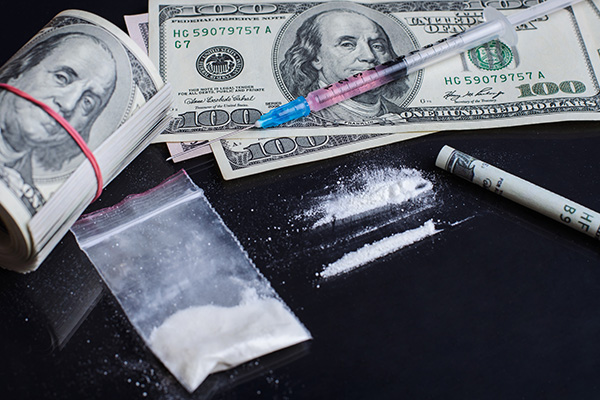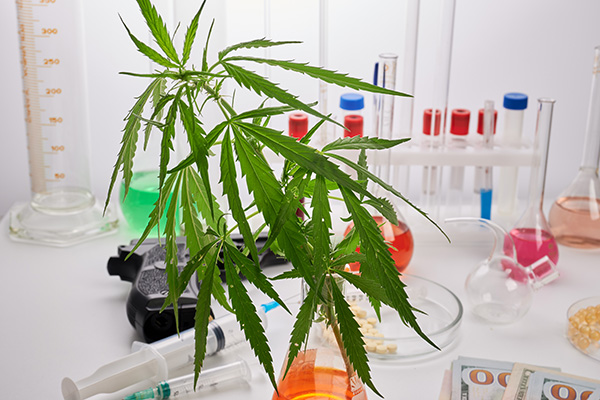Most Nevada drug crimes carry stiff penalties. Criminal defense attorney Jherna Shahani has successfully handled hundreds of drug cases. Drug Crimes can include crimes like possession, drug trafficking, and illegal selling or delivery.
Possession of a Controlled Substance
Simple Possession, or for personal use, of a controlled substance is the least serious drug crime in Nevada, but it is still a felony. Under Nevada Revised Statute 453.336, a person shall not knowingly and intentionally possess a controlled substance (excluding from a doctor) on his person, or under his control.
Possession can mean actual possession or on your person; constructive possession, or under your control; or joint possession, when more than one person is in control of the drug.


The penalties vary based on the type of drug and if the defendant has previously been convicted for a drug offense.
For Schedules I, II, III, or IV (see drug schedules below):
For Schedule V:
For gamma-hydroxybutyrate (GHB) or flunitrazepam (Royhypnol): a Category B Felony and 1 to 6 years in prison.
Marijuana was legalized in 2017. However, there are still some limitations on Marijuana possession.
Nevada Law says that persons 21 years of age or older may:
1. Possess, use, consume, purchase, obtain, process, or transport marijuana paraphernalia, one ounce or less of marijuana other than concentrated marijuana, or one-eighth of an ounce or less of concentrated marijuana;
2. If you live more than 25 miles from a marijuana retailer, possess, cultivate, process, or transport not more than six marijuana plants for personal use and possess the marijuana produced by the plants on the premises where the plants were grown, provided that:
(a) Cultivation takes place within a closet, room, greenhouse, or other enclosed area that is equipped with a lock that allows access only to persons authorized to access the area; and
(b) No more than 12 plants are possessed, cultivated, or processed at a single residence, or upon the grounds of that residence, at one time;
3. Assist another person who is 21 years of age or older in any of the acts described in this section.
The only legal way to buy marijuana in Nevada is from a state-licensed store or dispensary. It remains illegal to buy marijuana from any other source.
Possessing marijuana
Adults 21 years and older can legally possess marijuana in the following amounts:
Consuming marijuana
Adults 21 years and older can legally consume marijuana, but with restrictions on where it can be consumed:
Essentially, this means it can only be consumed on private property (at home, for example), and as long as the property owner has not prohibited it.
Driving and marijuana
It is illegal to drive under the influence of marijuana. Any amount of marijuana consumption puts you at risk of driving impaired and could result in a DUI.
Possession For Sale of a Controlled Substance
Possession with intent to sell (or even having a large enough quantity) is a felony in Nevada and is covered under Nevada Revised Statutes 453.337 and 453.338.
Possession with intent to sell does not have to involve selling drugs but the intention to do so. Intention is a mental state and can involve situations such as:
For Schedule I, II, or GHB:
For Schedule III, IV, or V drugs:
For possession, sale, manufacture, or delivery of drug paraphernalia, with intent to sell for a category E Felony and 1 to 4 years in prison. However, the court shall suspend the sentence and grant probation. Probation may include requiring the person to serve not more than 1 year in the county jail. In addition to any other penalty, the court may impose a fine of not more than $5,000.
Selling Drugs including importing, transporting, selling, exchanging, giving away, manufacturing or even offering or attempting any of these actions:
For Schedule I, II: for a category B felony
For Schedule III, IV, or V:
For Flunitrazepam, gamma-hydroxybutyrate (GHB) and schedule I substances: a person who knowingly or intentionally sells, manufactures, delivers or brings into this State or is in actual or constructive possession if the quantity involved:
(a) 4 to 14 grams, for a category B felony and imprisonment for 1 to 6 years and by a fine of not more than $50,000.
(b) 14 to 28 grams, for a category B felony and imprisonment for 2 to 15 years and by a fine of not more than $100,000.
(c) 28 grams or more, for a category A felony, by a fine of not more than $500,000 and by imprisonment:
(1) For life with the possibility of parole after 10 years, or
(2) For a definite term of 25 years, with eligibility for parole after 10 years.
Under the Influence of Illegal Drugs
Schedules I, II, III, or IV: for a category E felony and 1 to 4 years in prison and a fine up to $5,000
Schedule V: for a gross misdemeanor and jail time not more than 364 days and a fine up to $1,000
Schedule I
1. Has high potential for abuse, and
2. Has no accepted medical use in treatment in the United States or lacks accepted safety for use in treatment under medical supervision.
– opiates
– opium derivates such as heroin, morphine
– hallucinogens ie GHB, Mescaline, Lysergic Acid, peyote
– Datura plant derivatives
– drugs containing phencyclidine, mecloqualone or methaqualone
– methamphetamines and other high stimulant drugs
– cocaine and coca leave derivatives
Schedule II
1. The substance has high potential for abuse;
2. The substance has accepted medical use in treatment in the United States, or accepted medical use with severe restrictions; and
3. The abuse of the substance may lead to severe psychological or physical dependence.
– codeine
– hydrocodone
– morphine
– oxycodone
– certain other opium and opiate derivatives such as opium poppy and poppy straw
– methadone
– fentanyl
– amphetamines
– phenylacetone
Schedule III
1. The substance has a potential for abuse less than the substances listed in schedules I and II;
2. The substance has currently accepted medical use in treatment in the United States; and
3. Abuse of the substance may lead to moderate or low physical dependence or high psychological dependence.
– chlorphentermine
– derivatives of barbituric acid
– hydrogen iodide gas
– anabolic steroids
– ketamine
– human growth hormone
Schedule IV
1. The substance has a low potential for abuse relative to substances in schedule III;
2. The substance has currently accepted medical use in the United States; and
3. Abuse of the substance may lead to limited physical dependence or psychological dependence relative to the substances in schedule III.
– Alprazolam
– Clonazepam
– Diazepam
– Lorazepam
– Tramadol
– Phentermine
Schedule V
1. The substance has a low potential for abuse relative to substances listed in schedule IV;
2. The substance has accepted medical use in treatment in the United States; and
3. Abuse of the substance may lead to limited physical dependence or psychological dependence relative to the substances listed in schedule IV.
– Pyrovalerone
– Pregabalin
– Lacosamide
The most common defense strategies include the following:
There are other options to explore such as drug court, a drug diversion program, or reduced charges.